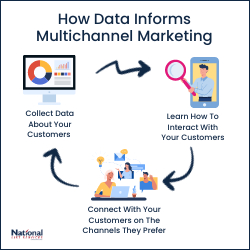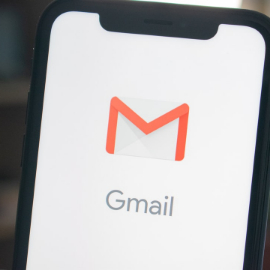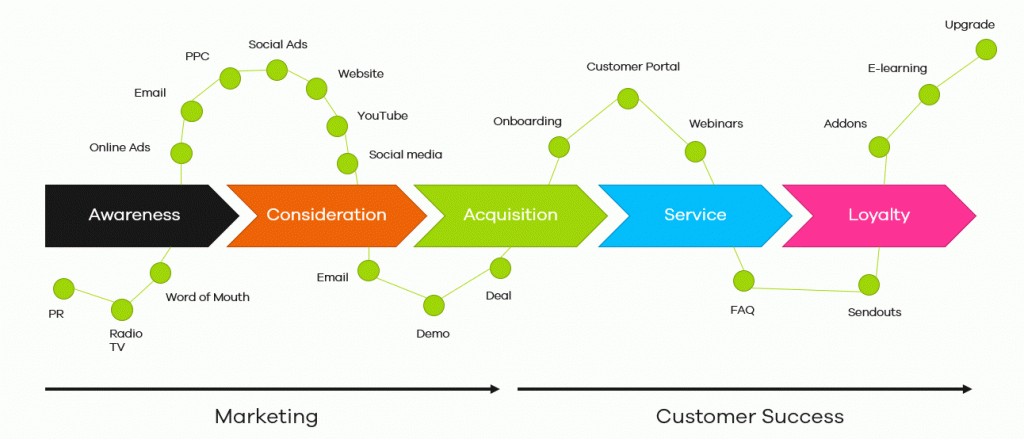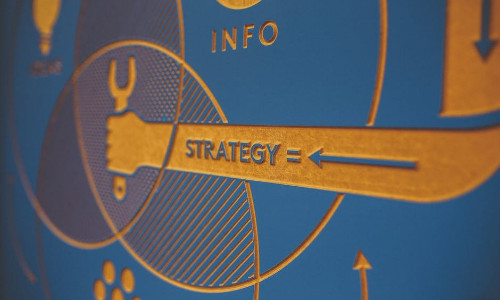How Can Data Help Multichannel Marketing?

Quality data and the proper interpretation is the foundation for any campaign. Especially for campaigns using more than one more channel or multichannel marketing. Customers now want personalized messages and interaction in the channel of their choice. The only way to do that successfully is have ongoing campaigns, spread out of many channels. How can data help?

Step one for any campaign is to know your customer. Dig through all your first party customer data to create personas of your target customers. Knowing about your customers will help you figure out what channel they will mostly like to engage through.
It is helpful to give your customers and potentials multiple touch point options. Encourage your customer to sign up for emails, interact on social media, and any other engagement options. The more data you have on your customers, such as email, phone, social accounts, and their address the easier it will be to engage in a way that reaches them.
Next, you can collect data and analytics about your customers from the channels you are using to constantly to learn more about your demographics and your customer’s buying habits. The more channels you use the easier it will be to learn about your customer.
Knowing what channels your customers prefer can save you money. For example, there’s no point in sending your target audience direct mail if you know that’s not a channel that works for them. Therefore, collecting data about your customers can help you lower your CPA and give your faster ROIs.
How are you using data to inform your multichannel campaigns?
Want to learn more about how customer data can help your business grow?
What’s Working in Marketing- 2020?

Eleven months into 2020, it is safe to say, this year has had a lot of surprises. So, what has working in marketing this year? Here is what we have found:
1) Customer Experience driven marketing. This encompasses a lot of things. The main things that we have found to be successful in 2020 are brand storytelling and personalization.

Our brain is literally wired to seek out and respond to narratives. And no matter what is happening around us, that isn’t going to change. We are going to connect and respond better to brands that tell us a story and bring us along on a journey. How are some companies implementing this strategy? YouTube series, podcasts, active social medias are popular first steps. (Learn more about customer journey’s here.)
Personalization is a big key in reaching your customer’s heart. Using the customer’s name in things like email subject lines is a good first step. Beyond that you can use audience segmentation to separate your audience into groups that share common characteristics like demographics and behavioral information. Using your audience segments to target your message to things that each group are actually invested in can greatly increase how personal your marketing will feel to the customer.
Utilizing Multi and Omni channel marketing strategies will also increase how smooth your brand experience is for your customers. (Learn more about building audiences here and here.)
2) Email. More than 50% of people in the US check their personal email over 10 times a day. Most people say that it is their preferred way to communicate with brands. Although “the end of email” has been threatened may times in recent years, 2020 has shown us that email isn’t going anywhere soon. For many companies, email became the only way they could communicate with their customers this year.

That means the margin for error with sending emails is relatively small. So. don’t forget to preview your email with different providers and devise before your send!
(Here are more email tips and tricks.)
3) Responsible consumerism and business practices. More than ever, consumers are aware of the effect their purchases have on the environment and on society and they want to buy from companies whose values align with theirs. People expect companies to actively fight injustices and be visibility support causes.
What has worked for your marketing this year?
What’s Your Customer Journey?

In 2020 we have lost many personal or face to face connections with customers. Therefore, digital marketing has to feel more personal. How? Focusing on your customer’s journey is the first step.
What is a customer journey? The customer journey is the order of all of your customers interactions and experiences with your company and brand. It is often illustrated in map form.
How can you build a customer journey?
Step one, who are your current customers? Analyze your first party data. What does your average customer “look” like? What is their age, gender, occupation? Do they have any specific interests or hobbies?
Step two, who are your potentials? Once you know who your average customer is you can build a look-a-like report to gain more prospects. (What is a look-a-like report? Get more information here.)
Step three, map their journey. How do they first hear about your brand? What are going to be their first interactions? What happens before they buy something? What happens after?
Here’s how that could be illustrated:

Blast marketing campaigns aren’t nearly as effective as they used to be. Building a campaign based on your customer’s journey can greatly increase your conversions and long-time customer loyalty. (One study found conversions were boosted over 300%!)
How can you use customer journeys?
How To Digital Advertise Effectively

With things changing around us so quickly, having a long-term advertising strategy can be a challenge. We need real time audience data as much as possible. How can we build an adaptable audience in this rapidly changing world?
One of the biggest changes in advertising this year was the extreme shift to digital. In an eMarketer poll, 56% of people said that they increased their online shopping this year. And 14% said that they shopped online for the first time. The way we shop has also changed. Because of the increase in online shopping, we tend to make faster, more impulsive purchase decisions. What does that mean for advertising?
Before the necessary shift to digital, brands could interact with customers in a wide variety of ways, often spread out over large physical distances. Billboards, signs, posters, newspapers, and magazines all exist with in different physical spaces. With digital advertising however, we are all competing for the same ad space. That ad space is worth more now has less guarantees attached to it.
Having the right audience is the foundation for your campaign…..
Asking yourself simple questions about your clientele such are gender, age, income, and possible other interests can make it easier to target more efficiently.

What can you do then make sure your potentials are seeing your brand? Start with the right people. A lot of marketers view the audience as a small detail or a piece of the puzzle. Having the right audience is the foundation for your campaign. Asking yourself simple questions about your clientele such are gender, age, income, and possible other interests can make it easier to target more efficiently.
Having a general idea of your audience is a good first step. Slowing narrowing down that audience helps reduce costs. A trigger-based campaign is a good way to do that. For example, you can send an email to a large amount of people who fit your initial criteria rather cheaply. Since social ads are more expensive, you then only need to advertise to the people for clicked or opened your email. You can then retarget them with Direct mail. Learn about your audience from each channel individually then apply it back to your campaign as a whole.
As difficult as it can be to have to shift an entire advertising strategy, it can be also be a great opportunity for growth. Using different channels can help you take a step back and look at your campaigns and your potentials in a new light. What have you learned about adapting strategies this year?
The End Of The Cookie: Part 2

What is going to fill the void left by third party cookies? We know for sure that our reliance on data isn’t going to change. It’s the foundation of marketing. we are always going to need to know who our audience is.
Three third party cookie alternatives.
- Use browsers history only to influence impressions. This is a very simple option that wil be easy to implement because things like google analytics pretty much already do this. But because its browser specific it could make OmniChannel marketing a challenge.
- First party identity information. This solution creates a unique ID for your web use. This option is popular with a lot of people in the commercial industry because even though your data pool will go down, using unique ids will give a higher match rate. Meaning if one of these matched personal ids show up in your system, you’ll know for sure that they are a solid prospect.
- Aggregated consumer data. This is somewhat of a catch all option, using consumer data from multiple sources to cross refence and match information. One advantages of this option is that marketers we be able to learn more about their consumers. Although you will know more about them as people, it’s unlikely that you will be able to actually know who they are.
So, what now? Now is the time to figure out as much as you can about your audience. It will be more of a challenge to find out who your customer base is without third party cookies. Focus on diversify into omnichannel marketing to get a clearer picture of your audience. It is also a good time to plan out a marketing strategy. Figure out what companies you are going to need relationships with going forward.
What alternatives to you think are going to fill the void left by third party cookies?
The Customer Engagement Revolution

Eight months ago, Sales Force surveyed 8,000 customers worldwide to see how customer engagement trends have changed. They found that we were in the middle of engagement revolution. Now, just a few months later, the world is a drastically different place. The “revolution” in how we engage with our customers, has been sped up. We have surged forward to get to where we were already heading.
Sales Force found that a whopping 84% of customers value the experience as much as the product or service. They also found in their research that 73% of customers expectations of quality customer support was increased by just one interaction. Meaning, if another company does something extraordinarily well, customers will begin to expect that level of service from your company.
So, what do the customers want? First, they want you to understand what they need and want, before they ask. How can you do that? Think compassionately and empathetically. For example, what do most people need right now? We know they are mostly stuck at home. They could be scared. Their regular routines are gone, and they are looking for solutions to problems that just appeared and need to be fixed immediately.
Second, customers want you to come to them, on the channel they’re are most comfortable with. It doesn’t really matter what how you prefer to interact with them. And third, customers expect there not to be in missing links in communication within your company. If they talk to a sales rep one day, and customer service the next, they don’t want to have to explain what they need both times. It redundant and feels like a waste of time.
How can your company keep up with the revolution? It’s actually pretty simple: follow the golden rule. Treat your customers the way you would like to be treated by other companies. Think about what they may need, help them with it, and you will be successful.
The End of the Cookie: Part 1

In January google announced that they are going to phase out third party cookies in the next two years. This created quite a buzz but what does it actually mean and what should you do?
Cookies were one of this first major web advertising break throughs, invented in 1994 for Netscape. Using cookies have become integral to most companies online marketing strategies. How do cookies work? There are two types of cookies. First and third-party cookies. Cookies work by creating a bread crumb (or cookie crumb) trail of your activity through a web page. First party cookies only have access to your activity on their website. Third party cookies are not tied to one website and instead track peoples trail through the internet. Marketer use both to figure out their audience and retarget them.
Seeing accept cookie notifications are commonplace. Why? Recent legislation has changed some internet privacy laws that accept cookies. Which is one reason that google is phasing them out. Safari and Firefox already have. Google Chrome however makes up more than 56% of web traffic. Google makes most of its revenue from advertisers. Online advertising was a 57.9-billion-dollar industry in the first half of 2019 and that number is expected to grow exponentially. Google has to be careful not to disrupt that industry to much while adapting to greater privacy demands.
There is not a concrete answer to what is going to fill the cookie void yet. Check out part two of this article to see some of the possibilities for a post cookie world.
